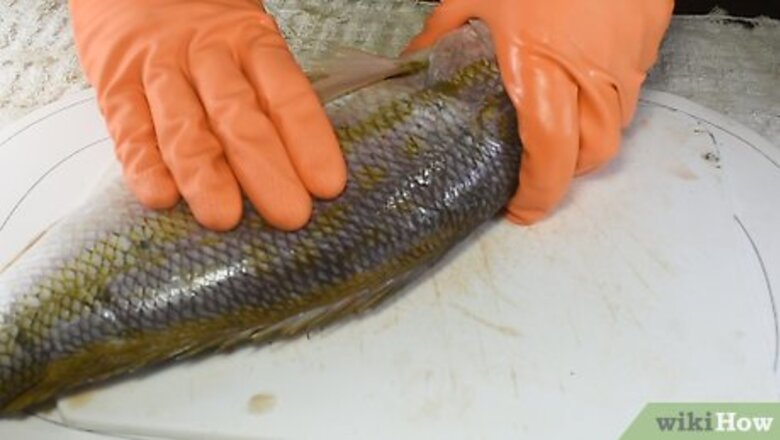
views
Scaling the Snapper
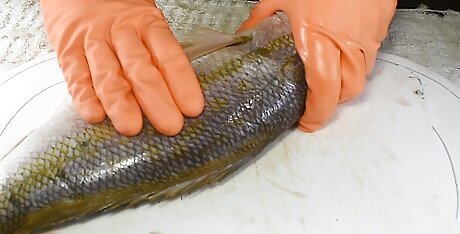
Put the fish on a counter with its head facing your non-dominant hand. You’re going to use your dominant hand to scale the fish, and you need to hold it by its head with your other hand.
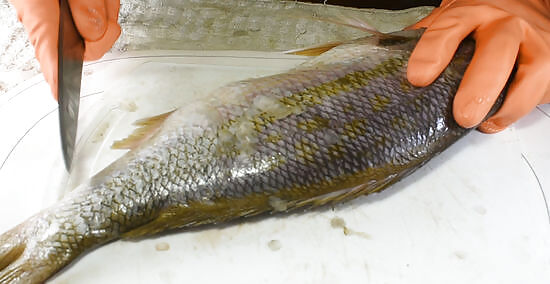
Hold the fish by the head and scrape it with a knife or scaling tool. Move against the grain of the scales to remove them. Start at the tail and work your way toward the head. Scale both sides of the fish’s body, including its belly.You can also use a butter knife to scale a fish. Consider wearing gloves when handling fish to reduce the risk of being cut by scales. Avoid moving the knife too hard, or you might cut the fish.
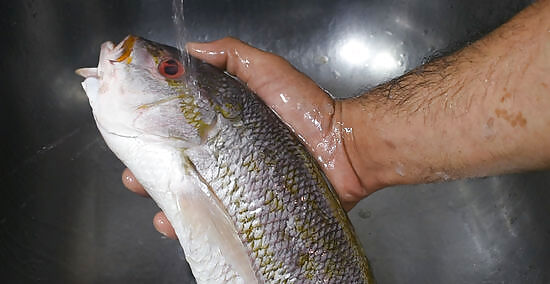
Rinse the fish under the faucet to remove loose scales. You don’t need heavy water pressure for this. Use just enough pressure to remove the loose scales without damaging the delicate fish meat.
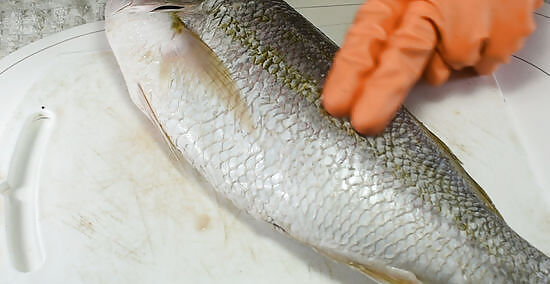
Lay the snapper on a cutting board and examine its skin for leftover scales. Move the palm of your hand back and forth along the sides to feel stubble, which feels slightly prickly but not sharp. Stubble indicates that the scales are gone, so you should feel it after removing the scales. The fish will also look smoother.
Gutting a Snapper
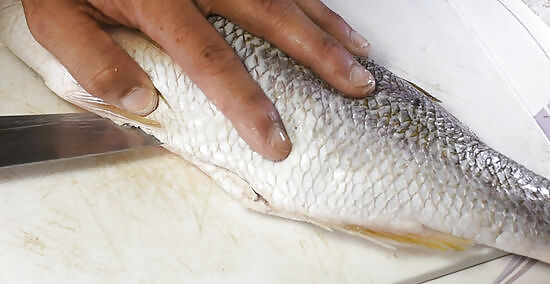
Make an incision from the fish’s anus to its jaw. Insert a sharp fillet knife into the fish’s anus and bring it all the way to the base of the lower jaw. Be mindful not to push the knife in too deep, or you’ll puncture the intestines, which will emit a rancid odor. Make the incision deep enough for you to stick your fingers inside to pull the meat back. Make sure your knife is sharp enough to easily cut through the fish without much force. The knife’s handle should be dry when handling it to prevent your hands from slipping.
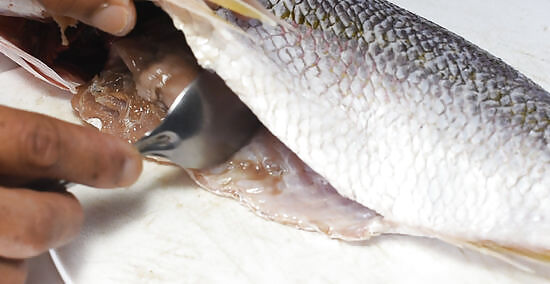
Pull the entrails out of the incision with your hands and a spoon. Open up the new cavity and pull its organs out. Use a knife to detach the gill filaments from the base of the head. Scrape out the kidneys, liver, and remaining organs with a spoon.
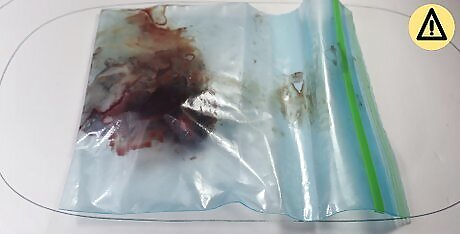
Dispose of entrails by packing them in a double zip-lock bag. This prevents the smell from escaping in your trash, and you also won’t attract wildlife to your area. Put the zip-lock bag in the garbage. Any bear-proof container will work, too. If you don’t have appropriate containers, another option is to bury fish guts in a hole that’s about 6 to 8 inches (15 to 20 cm) deep. If you’re at a camp, the hole should be 200 feet (61 m) from your camp. Some states don’t allow you to dispose of fish guts in the water, but for areas that do, the guidelines require that you put them in water that’s at least 10 feet (3.0 m) deep or in large rivers. Contact a local land manager to get guidelines for disposing of fish entrails in your area.
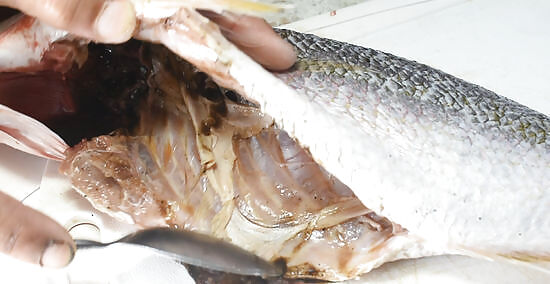
Remove the liver, kidneys, and other organs with a spoon. Also, remove the black lining inside the cavity, because it will alter the taste of the fish if left in. One way to remove the black lining is by rubbing rock salt into the cavity.
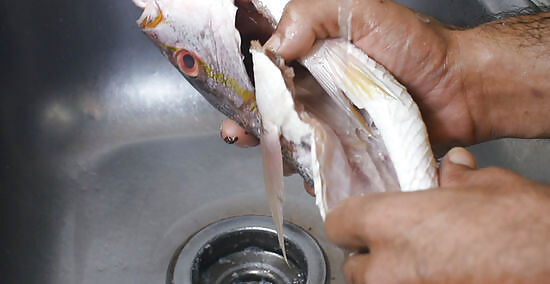
Wash the gut cavity with water to rinse all the blood out. You can use a hose if you’re preparing the fish outside, or wash it under the tap of your kitchen sink. The water pressure should be low enough to not damage the meat, but it should be high enough to wash the cavity thoroughly.
Filleting Snapper
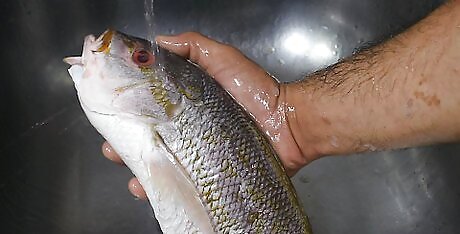
Rinse the snapper under running water to remove dirt, slime, and bacteria. Hold it under the faucet and rinse each side of the fish under water. Pat dry with paper towels when you’re done rinsing it. You can also rinse it with salted ice water, because snapper is a salt-water fish. Alternatively, you can wash a fish outside in a bucket of water if it’s an extra slimy fish.
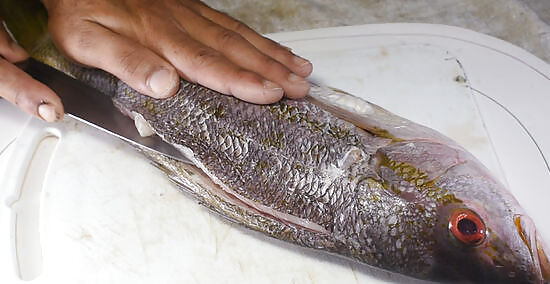
Cut an incision along the back bone from the head to the tail. Hold a sharp, non-serrated knife to cut along the fish’s back and stopping at the backbone. Move the knife so it goes through the top of the head. Firmly hold the snapper to keep it steady while you cut.
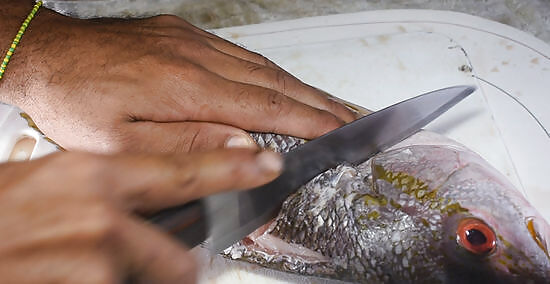
Make a 90-degree angled incision from head to tail. With the knife still in the fish, turn it 90 degrees at the end of the first incision and cut the meat from the head to the tail. The belly flap will also come off with the fillet as you cut the snapper like this. When cutting along the back, you’ll feel the spine with your knife, so you’ll have a guide as to where you should stop.
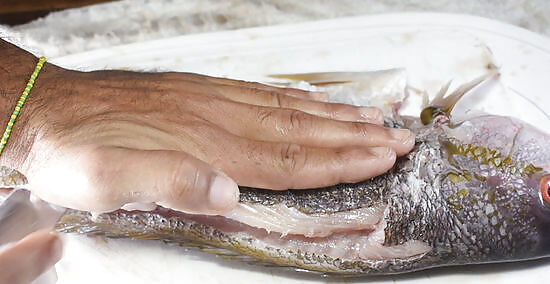
Cut the meat along the back bone to remove the fillet. Use short strokes with the knife as flat as possible to cleanly remove the meat from the bone. You should cut as close to the bone as possible, so no meat is left behind.
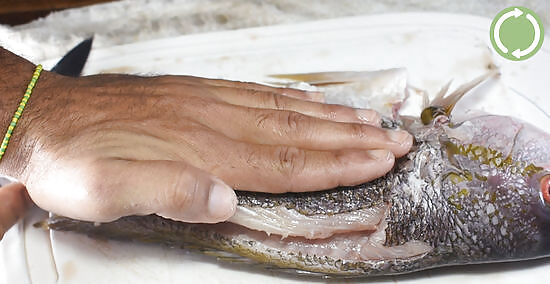
Turn the snapper over to repeat the process. Turn its back toward you and use a knife behind the gills and side fin. Cut along the back bone, halfway through the fish. Turn the knife 90 degrees to cut and slice along the spine from the head to the tail.
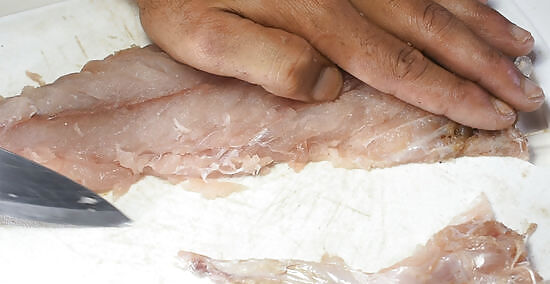
Remove the ribs and belly flap. Cut from the top of the ribs to the underside of the fillet with the knife in a 45-degree angle. You can pull the ribcage out by hand, but you may need to loosen it with the knife. There isn’t much meat on a snapper’s belly flap, so you don’t need to use it.
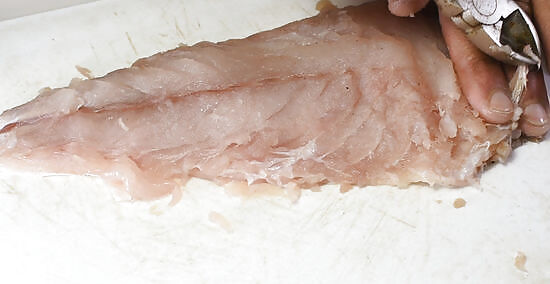
Pull out the pin bones from the middle of the fillet using pliers. Fish have small bones that can get stuck in the fillet when you don’t remove them. Rub your hand across the fillet to find bones. Press the flesh so the bones poke out and remove them with pliers. Pick the bones from the meat in the same direction they’re sticking out. You can also remove pin bones using a fillet knife to cut down the center line of the fillet and slice the bones out. This will leave a thin triangle cut out of the fillet, making one side larger than the other. If you feel resistance while pulling out the bones, be gentle but firm. Because the bones are angled toward the head, pull them sideways and up.
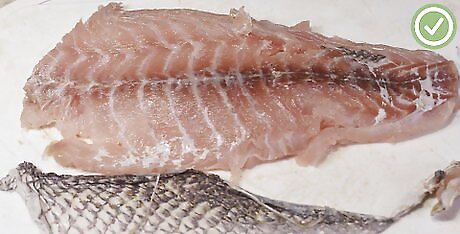
Skin the fillet using a large boning knife. Hold the fillet by the tail end, and slice just enough so the meat is separated from the tail skin, but still attached to the rest. Grasp the piece of separated skin with your hand or a towel and move the knife between the skin and the meat in a gentle sawing motion. Wiggle the tail skin so it moves the knife along to detach the meat from the skin.




















Comments
0 comment